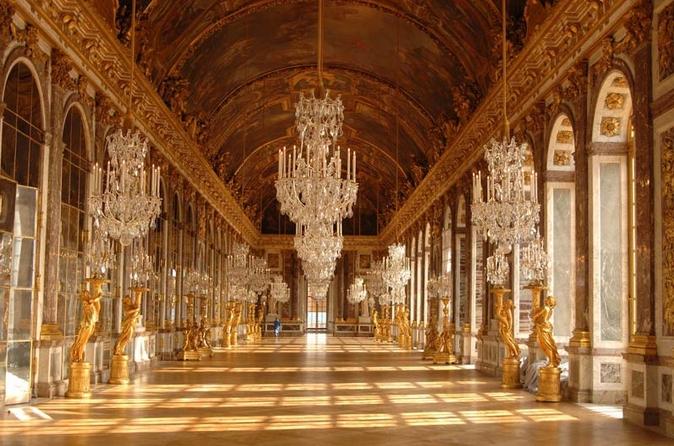Monday, 22/12/2025 | 05:46 GMT+7
A well-accepted measure for climate protection involves reducing greenhouse gas emissions. And buildings have the greatest energy saving potential, according to the official EU Energy Efficiency Plan 2011. Because of their lack of energy efficiency, historic buildings – including listed buildings and buildings generally worthy of preservation – may play an important role in meeting climate targets. This is precisely what the EU-funded project 3encult is aiming at: combining energy efficiency with the preservation of Europe’s rich cultural heritage in historic buildings.
Making old buildings more climate-friendly is not an easy task. Local conservation bodies set tight limitations to what can be done during renovation. Countries such as Germany or Austria have already set up regional or national guidelines for the energy efficient renovation of historic buildings. There are also plans for European guidelines. “But in heritage conservation, each case has to be seen individually,” project scientist Franziska Haas tells youris.com. She is also a research associate at the department of heritage conservation and design at the Technische Universität Dresden, Germany. Haas believes that solutions have become easier to implement as conservators have given up the notion to entirely preserve historic buildings. “It is now not only a question of how to conserve a building but also of how to further develop it,” she says.
Refurbishing windows, for example, is a useful approach for reducing energy loss in old buildings. In one of the project’s case studies in Bolzano, Italy, the project partners had the opportunity to completely replace the windows. “Preserving the old windows was neither necessary from a conservator’s point of view nor economically reasonable,” Haas says. The building was therefore fitted with new energy efficient windows. “Thanks to professional planning, the new design could be individually adapted to suit the baroque façade,” she says.
Compromises can also be reached on the way the energy is sup

plied to old buildings. For example, ensembles of historic buildings could benefit from district heating by combined heat and power plants. “This does not interfere with the historical character,” Haas says. By contrast, solar panels are not suited if they destroy the entire roofscape of old towns.
Experts acknowledge the challenges of this approach. “It is important to find technical solutions that [preserve] the aspect of historic buildings,” comments Tor Broström, professor at Uppsala University Campus Gotland and coordinator of the Swedish research programme for energy efficiency in cultural heritage buildings.
He also considers district heating as a very good example for saving energy because it has little impact. However, improving a building’s envelope, such as walls or windows, is often “the most difficult part because it affects the appearance,” Broström says. “Compromises are very individual,” he adds, such as in the case of Bolzano. Architects or conservators have to decide whether they would be willing to accept such solutions for their building.
An individual solution could also be found for the project’s case study in Innsbruck, Austria. There, the initial plan was to insulate the outer walls of a school building from the 1920s to protect the concrete façade. This, however, went against the conservators’ view. “Now there will be an interior insulation in two classrooms that accounts for aspects of the interior design,” Haas says. Along with other measures, the effects of the new insulation are currently monitored to determine whether the chosen approach is suitable for the entire building.
One of the advantages of the project is the empirical data it provides, according to Johannes Sima, head of the department for architecture and building technology at the Federal Office for the Protection of Monuments, in Austria. There was initially no consent on how to approach the renovation of the Innsbruck case study, “but the communication has improved,” he says.
He is, however, more generally doubtful whether improving the energy efficiency of historic buildings will substantially contribute to reducing greenhouse gases. “You should not try to crack a nut with a sledgehammer,” Sima says. In Austria, about 3.6% of the existing buildings are listed with only about one percent being actually heated. In his view, instead of changing historic buildings, changing the actual behaviour of users – such as better control of heating and opening windows – has the “highest potential” to save energy.
One of the lessons already learned throughout the project is the need for continuous dialogue, Haas points out. “The best solutions can be found if all actors involved – energy consultants, conservators, building physicists, architects – communicate with each other from the very beginning,” she says. “The dialogue between the actors is important,” Broström agrees, “but you need an idea how to do this.”
Truong Duy








 Webinar 2: “Financial Support for Energy Efficiency Enterprises – Opportunities and Challenges”
Webinar 2: “Financial Support for Energy Efficiency Enterprises – Opportunities and Challenges”
 Vietnamese enterprises achieve green growth and cut costs through energy efficiency
Vietnamese enterprises achieve green growth and cut costs through energy efficiency
 Capacity Building for Program Implementing Entity
Capacity Building for Program Implementing Entity
 Enhance Energy Efficiency Knowledge for Managers of Cement Industrial Enterprises
Enhance Energy Efficiency Knowledge for Managers of Cement Industrial Enterprises
 Promoting Energy Efficiency for Technical Staff of Brick and Ceramic Sector
Promoting Energy Efficiency for Technical Staff of Brick and Ceramic Sector
 Capacity building for participating financial institutions of the VSUEE Project
Capacity building for participating financial institutions of the VSUEE Project
 Capacity building for participating financial institutions in Ho Chi Minh City
Capacity building for participating financial institutions in Ho Chi Minh City